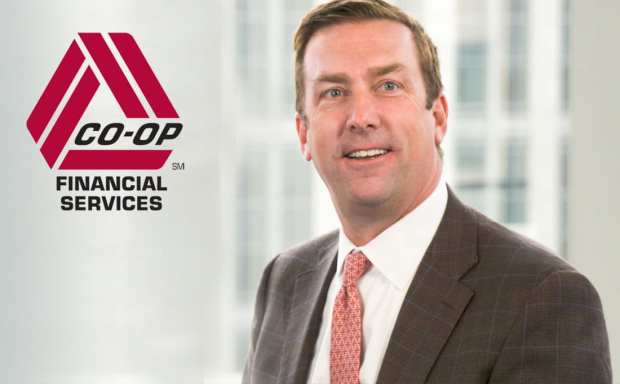CO-OP CEO On The Power Of A Payments Ecosystem

Credit unions (CUs) often have deep relationships with their customers, but they don’t often have primary financial institution status with them. CO-OP Financial Services President and CEO Todd Clark tells Karen Webster that it’s because of their service offerings – particularly around payments. CUs can’t build all they need on their own, he says, but they can plug in with the right platforms and partners – and they’ll have to if they want to stay competitive.
As the world of financial services is changing (and consumer expectations are increasingly digital), it’s not surprising that credit unions (CUs) have had to radically rethink their offerings for their members. Nor is it surprising that the solution providers that work alongside them have also had to evolve in real time.
That has been the experience at CO-OP Financial Services, President and CEO Todd Clark told Karen Webster in a recent conversation. Broadly speaking, CO-OP is a financial technology (FinTech) company that offers debit and credit processing solutions; operates the largest ATM and shared branch networks for thousands of credit unions in the United States; and offers a comprehensive set of online and mobile banking solutions.
How it has approached that role, however, has radically shifted over the last two and a half years — roughly the time period Clark has been at the helm. In its early years in the market, he noted, the business was largely a reseller of services. However, CO-OP has invested in reinventing its business toward a wholly different end, becoming a platform ecosystem into which credit unions can integrate, and gain access to a wide variety of products and services that help them meet their members’ needs.
“The idea is that once you are in our integration layer, it connects you to a world of services and offerings. … In most cases, credit unions can choose the pieces and parts with a small amount of integration and certification to drive their digitization efforts forward,” Clark said.
Moreover, CO-OP ensures that integration is seamless and secure, carefully vetting service partners through an enhanced security layer, and leveraging open application programming interfaces (APIs) and a proprietary developer portal. The platform has been a long time in the making, Clark said, and it is only in the last two years that the “rubber is hitting the road” in terms of delivering a true payments ecosystem.
A timely occurrence, he added, because the CUs it serves are realizing they need to rethink their total offerings, particularly as they relate to payments.
Tapping The Power Of Payments To Achieve Primary Financial Institution (PFI) Status
No matter their size, Clark said, all CO-OP’s credit union partners can benefit from diving into the digital space, and better insight into the best practices they need to best serve their members. There are many possibilities for improving the member experience — around member communications, alerts, card control mechanisms and digital banking.
“It is all about how to bring the programs they want to include under a single, controlled application, through a single processing solution, and integrated into the core of their systems,” Clark said. “It is easy to fall into, ‘Hey, this is getting a lot of buzz. Let’s do that,’ instead of taking a more holistic approach.”
That said, as credit unions are starting to think about serving their members more comprehensively, offering payments functionality is the modern gateway to building member loyalty across products and services. The state of the industry today, Clark told Webster, is that only about 21 percent of CUs believe they are their members’ primary financial accounts, serving as their general go-to for all financial services.
“Credit unions are very engaged in a variety of areas: auto lending, home lending, checking accounts. But the smart ones are seeing that payments in the relationship really demonstrates PFI status,” he said.
Moving that needle and helping credit unions get there is a big journey — lots of FinTech players want that PFI status from consumers, and are giving incentives to those who look to them as their favored payment providers. As Clark noted, it starts with a better integrated approach that views credit and debit as being “essentially the same vehicle,” as opposed to viewing one as a lending product and the other as “part of the ATM side of the house.”
The future — in this specific issue, and in the digital evolution of credit union services — is in blending and integrating, Clark said, because that is what “builds the better consumer experience across the board.”
The Not-So-Distant Future
The market has been alive with all kinds of mergers and acquisitions (M&A) in payments, and among credit unions and banks, during the first half of 2019, and Clark sees that trend continuing. In fact, it’s likely to speed up.
As for the sources of that speed, Clark said that if he had to guess, tap-and-pay systems on near-field communication (NFC) — either phone- or card-based — will be particularly powerful as it starts to come online at scale in the U.S. Overall, he thinks that will be a bigger game-changer than peer-to-peer (P2P) — which is beloved by consumers, but mostly in its free form, making it hard to see its future in banking. Real-time payments, and how they will be driven, will also be an area to watch.
Yet, wherever the innovations come from, they are coming, Clark said — and payment players are making their own pivots and consolidations to take on the evolutionary pressures as they come.
“When you see companies like FIS, Fiserv, Worldpay and First [Data] coming together (by all accounts massive organizations), we are seeing rapid technology moves and innovations that will keep driving change,” he said.
